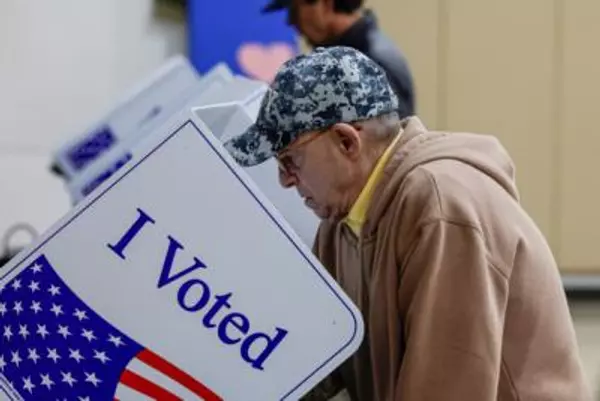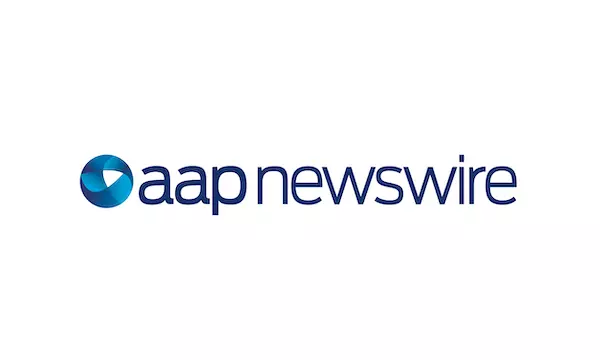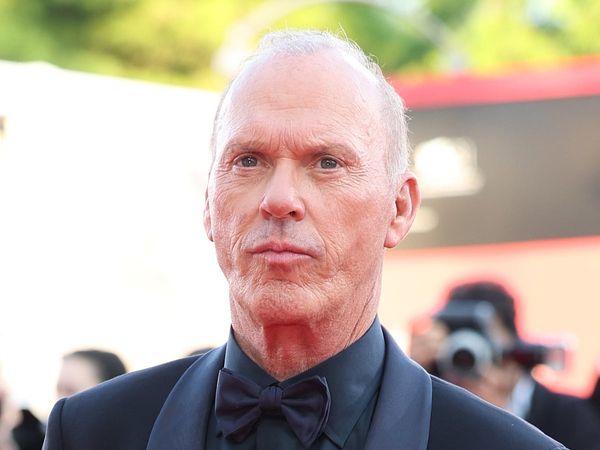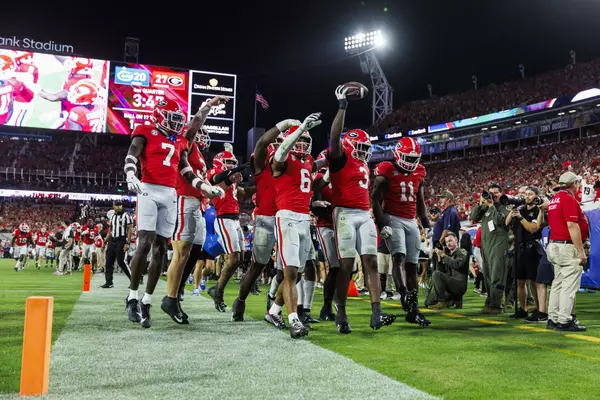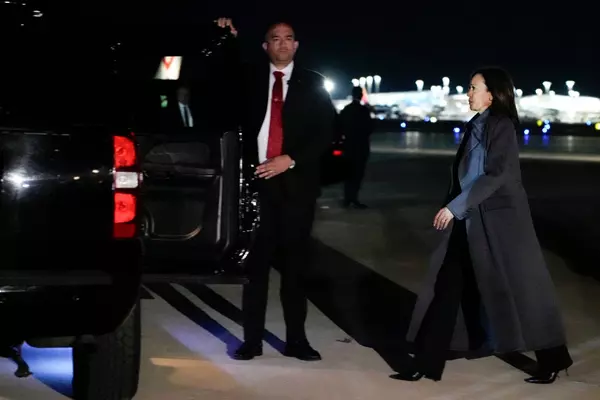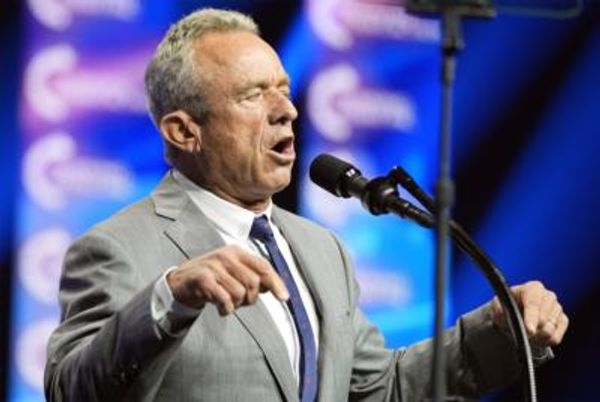
It's happened: the cork has finally fired out of the bottle. And unexpectedly so, as it turns out; just as everyone had averted its gaze from the glass receptacle's neck, the stopper broke free of its moorings and landed straight into the lap of James Vowles. Carlos Sainz has signed at Williams for 2025 and beyond, ending a seemingly inexhaustible saga of rumour, innuendo, and cyclical links and denials.
The Spaniard abruptly became a free agent for next season when Ferrari delivered its seismic news that Lewis Hamilton was to partner Charles Leclerc, and unwittingly assumed the headline role in the market masquerade ball. There was no shortage of suitors, particularly among the midfield teams looking to beat their rivals to something of a coup.
After all, this was a driver also linked with the vacant seats at Red Bull and Mercedes, a three-time winner who has become famed for his cerebral approach and tactical wizardry to plot his races. Alongside his accolades accrued after nearly a decade in F1, Sainz measured up to Max Verstappen in their Toro Rosso year-and-a-bit together, led McLaren alongside a still-green Lando Norris, and has found parity with Leclerc in their time together at Ferrari. Any one of F1's current great-and-good, and Sainz has at least matched them on a regular basis.
It's not a surprise to see why Williams wanted Sainz and, as soon as it became clear that the Madrid-born driver was on the market, Vowles knew that he had to make a play for him. He's finally got his man, but might be a slight understatement that he had to fight a little bit to secure his services.
When Sainz's unexpected joblessness for 2025 became apparent, Sauber was the first on the scene. The Swiss outfit is keenly awaiting its 2026 rebrand to Audi, and made Sainz a very lucrative offer to join Nico Hulkenberg at the team as it looked to make a statement in its preparations for the new regulation set.
But Sainz was never truly convinced by the offer. Sauber has declined significantly, doing naught but tread water as it sits in an uncomfortable holding pattern for 2026. Audi had to accelerate its takeover process at the start of this year as it became clear erstwhile owner Finn Rausing was not going to invest more money into a team he was not going to own for much longer.

Even considering the familial ties - Carlos Sainz Sr won this year's Dakar Rally with Audi - there were plenty more doors open for Sainz The Younger when he first received an offer from Sauber. There was Hamilton's old seat at Mercedes, for instance. Red Bull had not yet renewed Sergio Perez's contract, while Aston Martin might have considered Sainz had Fernando Alonso jumped ship for an Indian summer at a race-winning team.
Pipedreams? Perhaps. It certainly seemed to be the case when Alonso tied down his future with Aston Martin for another two years, and Red Bull "locked in" Perez for 2025 and beyond.
Mercedes scarcely appeared to be an option either, as teen prodigy Andrea Kimi Antonelli has long been earmarked for the seat alongside George Russell. The 17-year-old is considered to be an integral part of the team's future, and team principal Toto Wolff's predilection for Antonelli getting the drive has been shaped by his inability to offer Verstappen a concrete way into F1 back in 2014. For Sainz, Mercedes might have only been an option for a year or so, and risked becoming a persona non grata had the inevitable Antonelli signing been postponed to 2026.
Sainz was far more impressed by the Williams battleplan. Vowles has set his vision into motion, and owners Dorilton Capital will continue to support it
When Williams came in for Sainz, Vowles had a vision to sell him - one that he has attempted to regale the world with in his typically precise demeanour. On the face of it, it surely paled in comparison to the Audi deal: given their respective financial backgrounds, his Williams salary would not be nearly as expansive.
Audi offered a works team contract, Williams will remain a Mercedes customer team unto 2030 at the earliest. And, on reading any Vowles interview over the past 18 months, it's evident that the Grove factory still needs investment into its facilities to have any hope of clearing the bottom half of the field.
Yet, Sainz was far more impressed by the Williams battleplan. Audi's preparations for 2026 have long offered an impression of inertia, characterised by the internecine conflict between Andreas Seidl and Oliver Hoffmann. At Williams? Vowles has set his vision into motion, and owners Dorilton Capital will continue to support it.
On Sunday, Vowles rated his chances of clinching Sainz's signature as "out of 100, more than 50% - how's that? How confident am I? I think the odds are in our favour. But I've been stung by this already once this year." That alludes to Williams having almost cemented a deal in place earlier this season, before Alpine disrupted the whole pursuit with an 11th-hour bid for Sainz.

The ennui-laden French team had snapped out of its stupor when it became clear that Esteban Ocon was not going to continue at the team. As much as social media foghorns like to suggest that Ocon was relieved of his services for 2025, it was a genuinely mutual understanding.
Ocon was upset by Alpine's dreadful start to 2024 and his perception that the team was not listening to its drivers' feedback, and team principal Bruno Famin had his fill of the adversarial relationship with Pierre Gasly. The other driving force was Flavio Briatore, who had been tempted back to the team with whom he'd had so much success by Renault CEO Luca de Meo.
Briatore wanted to shake things up, and wondered why the team had not attempted to replace Ocon with arguably the best driver on the market for 2025. He told Sainz of the Alpine masterplan: abandon the Renault power unit for 2026 and take a Mercedes customer deal, with a revised technical structure whipped into shape by Moby look-alike David Sanchez, freshly sprung from a three-month stint at McLaren.
It tempted Sainz so much that he had to put the brakes on the Williams talks, which delayed his movements significantly; he was not going to make a decision in the thick of a triple-header. Further complexities arose too, and a bead of sweat appeared on Vowles' oft-furrowed brow.
Red Bull had extended Perez's deal in the hope that he could overcome his case of the yips, but his performances remained distinctly tepid when the ink had dried upon his clause-laden contract. Mercedes came back into view for a time, as Antonelli's maiden F2 season has been rather testing - once the top-line team in F2, the Prema outfit that Antonelli joined had struggled to get its head around the new-for-2024 Dallara chassis. Antonelli himself admitted that he was unsure if he was ready for F1, having not long been promoted straight from Formula Regional level.
Vowles thus had to reopen talks elsewhere. Valtteri Bottas was pegged as the first reserve should Sainz escape the net, and the Finn's performances this season have been masked by a dreadful Sauber chassis. And, despite earlier reservations about Ocon's grasp of a utilitarian approach on track, the Frenchman was considered as an option. Both drivers are known quantities to Vowles, although Ocon eventually called his own future by signing up with Haas for 2025 to replace Kevin Magnussen.
Sainz's ultimate decision appeared to boil down to a straight fight between Williams and Alpine. Of the two, Williams had a level of security that one attains with a consistent vision and identity, while Alpine appears to be shifting towards a model of quasi-manufacturer outfit before the team inevitably gets sold for not having enough brand value to the Renault Group. Despite Briatore's obvious draw, the mercurial Italian marketeer hasn't had enough time to fully influence the team's future - and with the best will in the world, the departing Famin does not match Briatore for charm.

Thus, Sainz concluded the Williams deal. The team has painted this as a two-year deal plus options for extension, and Vowles has denied that any deal would include a get-out clause for a top team.
So, why Williams? Vowles rather set the scene on Sunday, the day before Sainz's confirmation: "Here's what he told me, which actually resonated the most. 'The reason why I'm doing this is when I commit, I need to commit with all my heart and my soul, 100% - and to do that means I can't have any doubts'. And that's why he's taking the time. And that resonated with me."
And, of the projects, Williams offers arguably the most romance of any. Vowles has been busy plotting the team's course back to the front, aiming to complete a circuitous, arduous journey from its last title in 1997. He's offered Sainz the opportunity to be an integral part of that, and to help the ground-up rebuild of an illustrious team that very nearly followed the likes of Lotus and Brabham into extinction.
Albon will benefit hugely from Sainz's presence within the Williams camp, and the team can also count on his mental Rolodex of tips and tricks to progress
It barely needs to be said what Williams gets from Sainz, since he's among the top six or seven drivers on the grid on pure talent. He offers the team a proven benchmark to measure itself against, to measure where Alex Albon stacks up in the other car, and to perhaps offer the Anglo-Thai driver the competition he has lacked with Nicholas Latifi and Logan Sargeant at the team. Albon will benefit hugely from Sainz's presence within the Williams camp, and the team can also count on his mental Rolodex of tips and tricks to move towards the peak of F1's competitive order.
Sainz's move will now ignite the next phase of the driver market: there's just the small matter of one Mercedes seat, a Red Bull and RB drive depending on the outcome of a certain meeting, the Sauber spot alongside Hulkenberg, and the identity of Gasly's new Alpine team-mate. Bottas will be the driver most put-out by Sainz's signing at Williams, which is likely to lead to Sauber wanting to renew his deal for the foreseeable. And what of Daniel Ricciardo, Liam Lawson, or even Perez? We might not have to wait too long for an answer...

